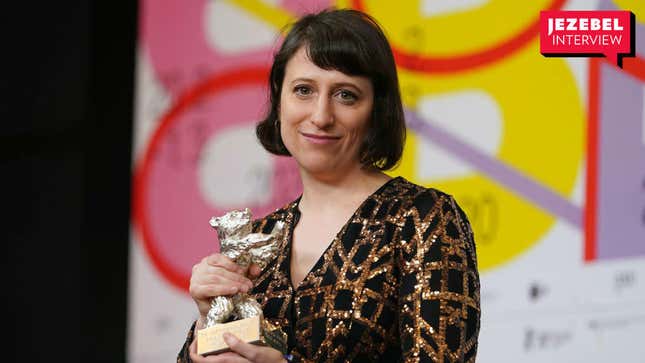Never, Rarely, Sometimes, Always Director Eliza Hittman on Her Tense, Minimalist Abortion Film
EntertainmentMovies

Director Eliza Hittman’s latest feature Never, Rarely, Sometimes, Always takes its name from a series of responses patients can give during a counseling session at Planned Parenthood. “Your partner has refused to wear a condom,” lists one. “Your partner has made you have sex when you didn’t want to,” is another.
That Hittman took her title from a Planned Parenthood document is just one example of the film’s dedication to accuracy. The story follows Autumn (Sidney Flanigan), a teenager from rural Pennsylvania, a state where minors must obtain parental consent to get an abortion, who must travel to New York City with her cousin Skylar (Talia Ryder) to get the procedure. Along the way, the two face an anxiety-inducing series of small hardships that stack up over the course of the film: leering bosses and random boys, state laws, expenses, and pro-life centers masquerading as abortion clinics.
While it’s nearly impossible to portray what abortion looks like in the daily lives of women across race, age, economic status, and location, the startling minimalism of Never, Rarely, Sometimes, Always keeps it from feeling like a sanitized advertisement for a woman’s health clinic, or on the darker end of the spectrum: a torturous, violent depiction of abortion in a country where for many women it’s just a routine procedure. Hittman spoke with Jezebel about researching the movie and the weight of depicting abortion.
This interview has been condensed and edited for clarity.
JEZEBEL: Why this story now?
ELIZA HITTMAN: I originally began writing the film in 2012. I was inspired to start reading about abortion rights in Ireland after the death of Savita Halappanavar. And I began thinking about the journey that a lot of Irish women would take across the Irish Sea and to London and back in one day. I was really compelled by the idea of that journey and thought it was an untold story. It evoked a lot of images for me of women traveling in secrecy, sort of on the run.
But at the time when I had the idea for the film, I wasn’t making very big movies. I was making micro-budget movies. And I didn’t think anyone would let me make a movie set in Ireland. So I began thinking about what that journey looks like here when women travel from rural areas into urban areas to get access.
I did a lot of work on the project and started pitching it, but because it was 2013, at the time nobody really saw the relevance. People were living a little bit in this kind of delusional, sort of progressive, moment of Obama. I put the project down and I made another movie that was much closer to home, which was Beach Rats. That premiered and then Trump was inaugurated. I was at Sundance and just organically began talking about this project as my next film. It was actually an old project that was sort of living inside me for a number of years.
How did it feel to have to put that the project aside because people weren’t seeing the relevancy in it?
It was sad. The reaction was, oh that could be an interesting documentary. I tried to do an international film market with the project and didn’t get any interest from co-productions. But to be honest, I think maybe it was a good thing for me to put the project aside. The version that I made is maybe stronger than the one that I was working on then, so maybe it needed to gestate. The other version was more solitary, but I realized it didn’t feel credible that she would go alone.
-

-

-

-

-

-

-

-

-

-

-

-

-

-

-

-

-

-

-

-

-

-

-

-

-

-

-

-

-

-

-

-

-

-

-

-

-

-

-

-








































